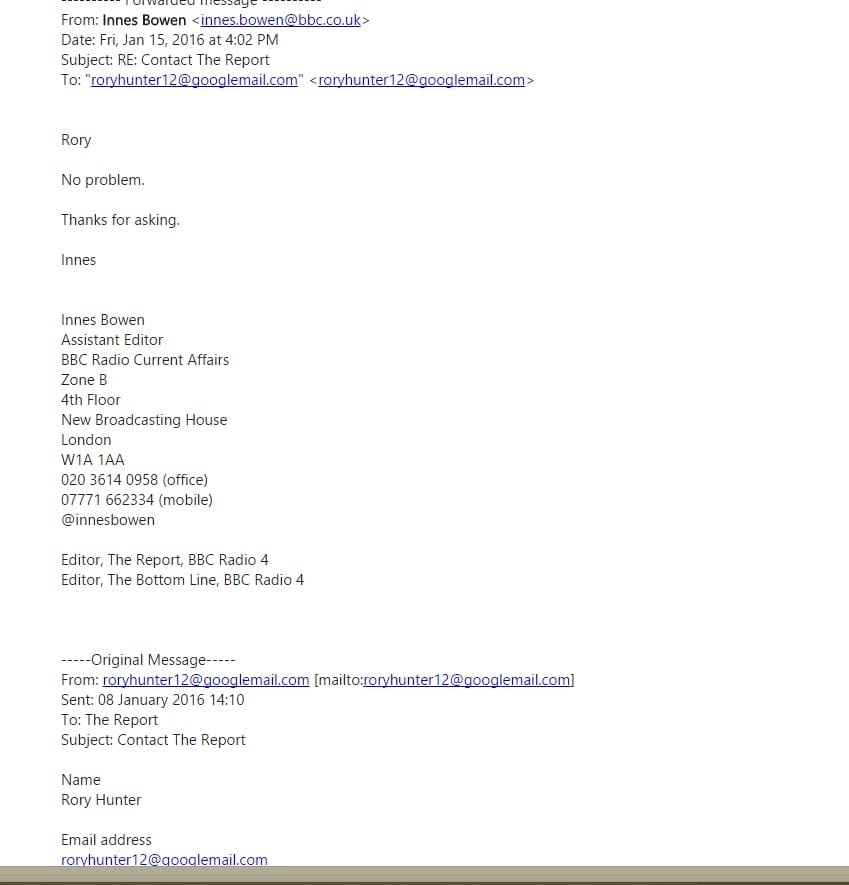Books –
Kenny, T. (2000) Sound For Picture. Film Sound Through the 1990s. Artistpro.
Kerins, M. (2010) Beyond Dolby (Stereo): Cinema in the Digital Sound Age. Indiana: Indiana University Press.
Purcell, J. (2007) Dialogue Editing For Motion Pictures. A Guide To The Invisible Art. Oxford: Elsevier.
Shepherd, A. (2008) Pro Tools for video, film, and multimedia 2nd edition. Boston: Course.
Watson, G. (2004) The cinema of Mike Leigh, a sense of the real. London: Wallflower.
Online sources – (Not exhaustive)
http://www.bbc.co.uk/academy/production/television/sound – Role
http://creativeskillset.org/job_roles_and_stories/job_roles/3814_supervising_sound_editor – Role
http://filmsound.org/terminology/svseditor.htm – Role
http://designingsound.org/2010/08/inception-exclusive-interview-with-richard-king/ – Richard King
http://www.hollywoodreporter.com/behind-screen/dark-knight-sound-editor-designer-850224 – Richard King
http://filmsound.org/terminology/svseditor.htm – Role
http://www.theguardian.com/film/2013/nov/18/how-we-made-naked – Naked, Mike Leigh
http://www.popmatters.com/review/145055-naked/ – Naked, Mike Leigh
http://old.bfi.org.uk/sightandsound/review/535 – Green Mile Review
http://markmangini.com/Mark_Mangini/Blog/Entries/2001/5/24_The_Green_Mile.html – The Green Mile Sound Design
http://www.stevenbenedict.ie/2014/06/shawshank-redemption/ – Shawshank Redemption
https://auditorydimensions.wordpress.com/2010/04/16/sound-image-relational-analysis-the-shawshank/ – Shawshank Redemption
http://designingsound.org/2011/03/exclusive-interview-with-mark-mangini-and-dave-whitehead-of-the-rite/ – Mark Mangini
http://transom.org/2005/walter-murch/
http://trueherostudio.com/producer-blog/use-of-temp-tracks-pros-and-cons – Temp Tracks
http://dvinfo.net/forum/all-things-audio/102523-mixing-levels-dolby-digital-dvd-vs-theatrical.html – Final Mixing
http://nofilmschool.com/2014/04/soundworks-collection-transcendence-wally-pfister-dynamic-range – Final Mixing
https://www.gearslutz.com/board/post-production-forum/229741-standard-mixing-levels-movie-theater-dvd-broadcast-tv-commercials-etc.html – Final Mixing
https://tech.ebu.ch/docs/tech/tech3344.pdf – Final Mixing
http://markmangini.com/Mark_Mangini/Reading_Room_files/Final%20Mix%20Sound%20Tips%20Aug09.pdf – General Tips
Video Sources –
https://www.youtube.com/watch?v=gMwzvAt84P8 – Trailer, Mike Leigh’s Naked.
http://soundworkscollection.com/news/soundworks-collection-interview-series-mark-mangini-sound-designer-of-mad-max-fury-road-and-black-mass – Mark Mangini : Keynote Speech
http://markmangini.com/Mark_Mangini/Videos/Entries/1999/3/13_Sound_Design_for_%22The_Green_Mile%22.html – Cinema Secrets – The Sound of The Green Mile
https://www.youtube.com/watch?v=WDeGA8PL0qE – ‘AUSTRALIA’ – Behind the Scenes – Supervising Sound Editor on location
